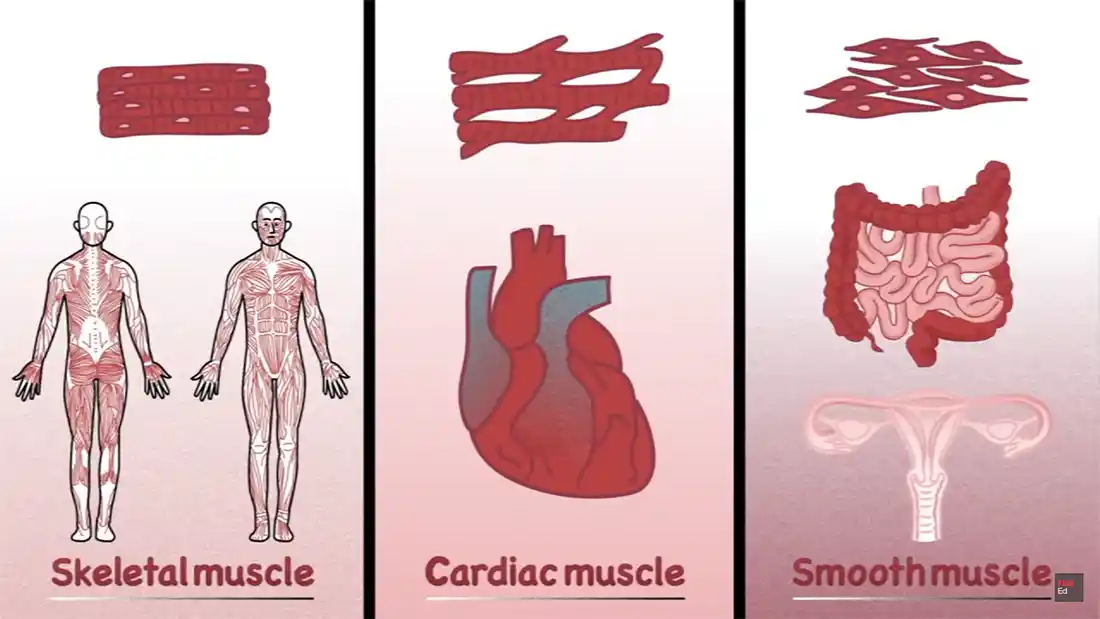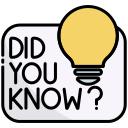

Muscles, contract, stretch, cardiac, skeletal, smooth, multipennate, bipennate, unipennate, convergent, parallel, fusiform.
The muscular system is a series of muscles that connect to bone, provide movement of the body, and make up almost half of our body's weight.
A muscle contracts and stretches. This is the simplest way to explain what they do. Even when you look at the heart (as it is itself a muscle), it still has the same function of contracting and stretching. This is a basic way to explain how a heart pumps blood around the body.
Each muscle is an organ. But we collectively call them muscles and classify them together.
The following still is from a video on the muscular system, with the following details:
Please click on the image to view the video.

There are three main types of muscles:
These are only found in the heart, and they perform involuntary muscular movements. They are responsible for pumping our blood around our circulatory system. These muscles are controlled to a degree by the endocrine system, the nervous system and various chemical responses.
These are muscles that attach to bone and skin. They perform a voluntary movement, because we don't have to move our arm if we don't want to, for example. They power the joints, giving us the movement ability. They are controlled by the nervous system. These muscles have a high energy requirement. This means they need a lot of energy [food] intake to help them be at their best. When they continually stretch, their strength increases.
These are muscles that line the walls of our internal organs - our stomach, intestines for examples. They too carry out involuntary movements, based on the organ they are structured in. They have a low energy requirement, as they process food [in intestines] or help breathing [in the lungs]. Both these and the cardiac muscles have rhythmic contractions, and they do not fatigue. They are controlled by the nervous system, the endocrine system, various chemicals in the body and stretching.
In order to perform at their best, a muscle needs to be the right shape. In the resources on the right, you should see a closeup of the shapes muscles can be. Depending on where they are on our body, depends on their shape. For instance, there are muscles around our eye that open and close our eyelid.
For the eye to blink, it needs a specific shaped muscle. The type of muscle it uses is a circular muscle, which is placed around the eye. This is called a musculus orbicularis oculi. There are other types of muscle shapes, including:

The blink of an eye happens in 100 milliseconds. This means you can theoretically blink 3 times in a second! It happens so fast to help protect your eye from ingress of dirt, or to help keep the fluids up around your eye.
The technical terminology for facial muscles is craniofacial muscles. They are a group of around 20 muscles that lay flat on the cranial area of the skull, and there are several differences to other muscles in our body, including:
A pair of muscles that work together are called antagonistic pairs. An easy example of this would be your arm. Right now, while reading this, you have an antagonistic muscle pair working. Either you have your arm outstretched, or bent at the elbow. Being bent at the elbow means that two of the four main muscles on your arm are loose and relaxed, while the other two are tense and contracted. The muscle that is contracting is called the agonist, while the one that is relaxed is called the antagonist.
The English term for antagonist is:

A person who is opposed to, struggles against, or competes with another.
This theory can be placed into the muscle pairs of your arm, and around your elbow. It is the opposition of a muscle to compete with the other.
Activities that can be done in a classroom.

If you are unable to see the board, please click here.
Disclaimer | About Me | Sitemap
Website design by SyntaxHTML.



Blue icons adapted from icons courtesy of Smashicons.com